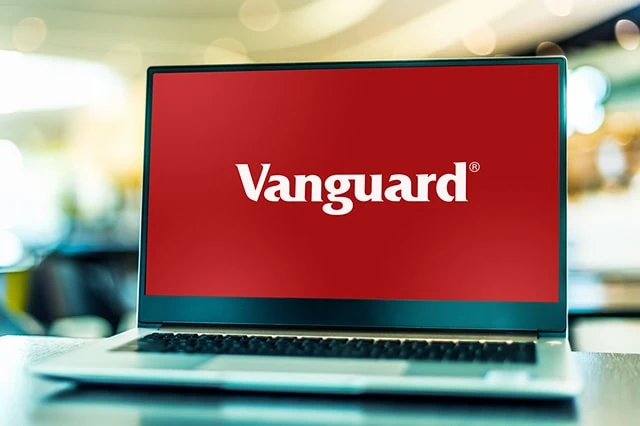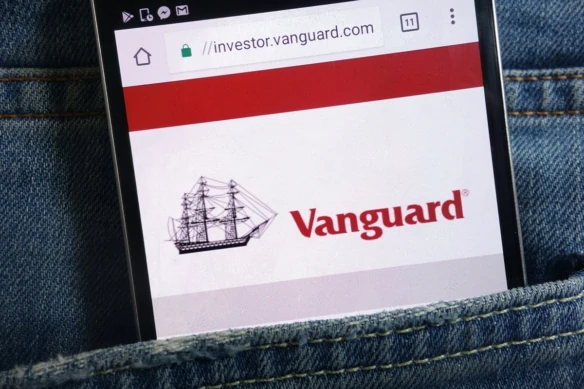If you’re currently or planning on investing toward your retirement, you can thank Vanguard for how inexpensive doing so has become … even if you don’t invest in a Vanguard account or own any Vanguard funds.
After all, it was Vanguard that created the index fund—a product that didn’t just bring down expenses in-house, but triggered more than three decades’ worth of lower fees from fund providers here and around the globe.
Today, Vanguard remains one of the investing world’s low-cost leaders. As such, it offers some of the most popular retirement-focused funds, of both the index and actively managed variety. And many of these funds are right at home in an individual retirement account (IRA).
Let me introduce you to a handful of these IRA-ready funds—each of which is inexpensive, effective, and sport long-term investing objectives. These funds also make sense for many tax-advantaged plans, so you can consider holding them not just in IRAs, but also HSAs or (when available) 401(k)s.
Disclaimer: This article does not constitute individualized investment advice. These securities appear for your consideration and not as personalized investment recommendations. Act at your own discretion.
What Should You Want in a Retirement Fund?
When investing your retirement savings, you need to consider a few critical factors:
- Diversification: To start, a robust retirement portfolio should provide diversification across various asset classes. This typically means stocks and bonds, though it can also mean alternative asset classes such as real estate or commodities. Diversifying your retirement portfolio across these asset classes can help defray your risk and smooth your returns.
- Expenses: Costs matter too. Every dollar spent on fees and expenses is a dollar no longer available to grow and compound over time, so keeping expenses cut to the bone is vital. Good news there: The best Vanguard retirement funds will generally have some of the lowest fees and expenses in the business.
- Taxes: A taxable account, like a standard brokerage account, is better suited to take advantage of certain tax-advantaged investments, such as municipal bonds. For tax-advantaged accounts, such as IRAs, some of the best investments include bond funds and actively managed stock funds. (I’ll explain why when we get to those funds.)
- Income: Finally, you ideally want your retirement portfolio to produce regular dividend income. Stocks can regularly experience nasty corrections and bear markets, but a good income fund can provide for your living expenses without forcing you to sell at an inopportune time.
Related: 5 Best Vanguard Retirement Funds
What Types of Funds Are Available in IRAs?

You can think of an IRA as a tax-advantaged brokerage account, insofar as they’re typically self-directed and extremely flexible. In most IRAs, you can own just about any type of fund—mutual funds, exchange-traded funds (ETFs), and even closed-end funds (CEFs).
ETFs typically beat both mutual funds and CEFs on fees, sometimes by a considerable margin. But there are a few reasons to consider Vanguard mutual funds in an IRA.
They’re cheap, for one. Vanguard mutual funds typically offer very low fees—in many cases lower than even many ETFs with a similar strategy.
Also, many of Vanguard’s mutual funds are actively managed, which as I mentioned above is more efficiently held within an IRA. And you very well might prefer to have a human manager overseeing certain strategies rather than buy a fund that simply follows an index.
Related: 5 Best Fidelity Retirement Funds [Start Saving]
What Is a Mutual Fund?

A mutual fund is an investment company that pools money from many investors to buy stocks, bonds or other securities. The investors get the benefits of professional management and certain economies of scale. A pool of potentially millions or even billions of dollars is large enough to diversify and might have access to investments that would be impractical for an individual investor to own.
Here’s an example: An investor wanting to mimic the S&P 500 Index (an index made up of 500 large, U.S.-listed companies) would generally have a hard time buying and managing a portfolio of 500 individual stocks, especially in the exact proportions of the S&P 500 Index. Another example: An investor wanting a diversified bond portfolio might have a hard time building one when individual bond issues can have minimum purchase sizes of thousands (or tens of thousands!) of dollars.
Equity funds or bond funds will generally be a far more practical solution.
To invest in a mutual fund, you’ll need to open an account with the fund sponsor or open a brokerage account with a broker that has a selling agreement in place with the fund sponsor. As a general rule, most large, popular mutual funds will be available at most brokers, so if you open a traditional investment account (like an IRA or brokerage), you’ll have access to most of the mutual funds you’d ever want to invest in.
Why Vanguard?

Vanguard Group is a leader in investment funds. Today, this former upstart mutual fund company has over $8.0 trillion in assets under management with an average expense ratio of just 0.08%, or a mere 80¢ for every $1,000 invested. There are currently more than 420 Vanguard funds, including mutual funds and Vanguard ETFs.
Vanguard grew into the powerhouse mutual fund company it is today by taking care of its clients and genuinely looking after their interests. Vanguard funds really started and continue to accelerate the trend of fee compression. But it’s not only the best Vanguard retirement funds that benefit. We all collectively pay less in fees and expenses and enjoy better returns because of the index revolution started and led by Vanguard’s founder Jack Bogle.
Make sure you sign up for The Weekend Tea, WealthUp’s free weekly newsletter that over 10k monthly readers use to level up their money know-how.
Related: The 24 Best ETFs to Buy for a Prosperous 2024
The Best Vanguard Retirement Funds for an IRA in 2024
With all that out of the way, let’s dig into some of the best Vanguard retirement funds to hold in an IRA that you might consider diving into this year.
1. Vanguard Explorer Fund Investor Shares

- Style: U.S. small growth
- Assets under management: $3.1 billion
- Expense ratio: 0.45%, or $4.50 per year for every $1,000 invested
- Dividend yield: 0.5%
- Minimum initial investment: $3,000
Vanguard Explorer Fund Investor Shares (VEXPX) is an actively managed mutual fund that invests in predominantly American small- and midsized stocks with growth potential.
VEXPX’s portfolio currently spans ~720 stocks with an average market cap of $6.3 billion—right around the midpoint of the mid-cap range ($2 billion to $10 billion), though the majority of its holdings fall into the small- ($500 million to $2 billion) and micro-cap ($500 million or less) ranges. Holdings right now include the likes of Texas tank barge operator Kirby Corp. (KEX) and mid-cap investment bank Houlihan Lokey (HLI).
While larger companies also have the potential for outsized growth, smaller companies, as a group, tend to be more explosive—for better or worse. They benefit from investing’s rule of large numbers (effectively, doubling your revenues from $1 million to $2 million is a lot easier than doing so from $1 billion to $2 billion). And when institutional investors become interested in these stocks, large influxes of new investment money can send their stocks skyward. But they’re riskier. Smaller firms have fewer and narrow revenue streams, meaning if a core product line struggles, it can more easily lead to stock turbulence and losses. They also have less access to capital than larger companies, so if times get tight, it’s harder for them to survive.
Funds like VEXPX help defray that risk by allowing you to buy many smaller companies at once, so one stock’s failure doesn’t torpedo your portfolio’s worth. That risk is further reduced by Explorer’s management style—holdings are selected by five different investment advisors that manage independent subportfolios. This empowers each advisor to use their specialities to generate outsized returns while preventing any single strategy from upending the entire fund’s performance.
You want to hold actively managed funds like VEXPX in tax-advantaged plans like an IRA because of how they’re run—that is, human managers tend to add and subtract holdings much more often than an index fund does. To wit, Explorer has a “turnover ratio” of 40%, which means in a given year, it trades two out of every five holdings. A popular Vanguard S&P 500 index fund, by comparison, has a turnover ratio of just 2%.
This matters because trading in mutual funds can generate capital gains, which are returned to investors as distributions every year. These distributions are taxable, but you can snuff out this liability by not holding these funds in a taxable account.
Want to learn more about VEXPX? Check out the Vanguard provider site.
Related: 10 Best Vanguard Funds to Buy
2. Vanguard Total Bond Market Index Fund Admiral Shares

- Style: U.S. intermediate core bond
- Assets under management: $97.9 billion
- Expense ratio: 0.05%, or 50¢ per year for every $1,000 invested
- SEC yield: 4.3%*
- Minimum initial investment: $3,000
No retirement asset allocation is complete without bond funds. As an asset class, bond funds play an important role in lowering volatility and providing regular income. However, because bond interest is taxable at less favorable (read: ordinary) rates—and because interest is the predominant source of returns on bonds—these funds are best held in tax-advantaged accounts like IRAs.
Within the world of Vanguard bond funds, the Vanguard Total Bond Market Index Fund Admiral Shares (VBTLX) stands out as one of the very best Vanguard retirement funds for its combination of competitive yield and rock-bottom fees and expenses. VBTLX is large, with $97.9 billion in the Admiral share class and more than $315 billion in quality bond assets spread across all of its share classes. And with an expense ratio of just 0.05%, it’s all but free to own.
The Vanguard Total Bond Market Index Fund provides broad exposure to the universe of bonds. Approximately 46% of its portfolio is Treasury or agency debt backed by the U.S. government, and another 20% is invested in government mortgage-backed securities (MBSes). Industrial-sector corporate bonds make up a little over 15%, banks and financial institutions make up 9%, and the rest is spread across foreign bonds, utilities, and commercial mortgage backed securities (CMBSes).
One of the most critical metrics to consider when considering bond funds is duration, which is a measure of interest-rate sensitivity. As an example, a bond with a duration of two years would see its price rise by 2% if interest rates fell by 1% (or conversely, would see its price fall by 2% if interest rates rose by 1%). The actual calculation of duration is fairly complex; it’s the weighted average of the bond’s cash flows. But the key takeaway is that, all else equal, the longer a bond’s time to maturity, the higher its duration—and thus the higher the interest-rate risk.
The Vanguard Total Bond Market Index Fund, with a duration of 6.3 years, has a medium-term duration with only moderate interest-rate risk. So, apart from the 4%-plus yield, investors could enjoy respectable capital gains if market interest rates decline in the coming years in response to falling inflation.
* SEC yield reflects the interest earned across the most recent 30-day period. This is a standard measure for funds holding bonds and preferred stocks.
Want to learn more about VBTLX? Check out the Vanguard provider site.
Related: 10 Best Fidelity Funds to Buy
3. Vanguard Wellington Fund Investor Shares

- Style: Moderate allocation
- Assets under management: $13.3 billion
- Expense ratio: 0.25%, or $2.50 per year for every $1,000 invested
- Dividend yield: 2.1%
- Minimum initial investment: $3,000
If it’s a tax-smart move to stash actively managed funds into an IRA, and to stash bond funds into an IRA … well, you can imagine where an actively managed stock-and-bond fund might belong.
Vanguard Wellington Fund Investor Shares (VWELX) is Vanguard’s oldest mutual fund—a “balanced” or “allocation” product (read: stocks and bonds) that has been around since 1929. It’s managed by Wellington Management, an investment management company with nearly a century of operational experience.
Wellington, which is considered a moderate allocation fund, invests about two-thirds of assets in stocks, and the other third in bonds. The stock portion of the portfolio currently holds around 75 predominantly large-cap stocks with a median market cap of over $200 billion. It’s a “who’s who” of blue chips such as Microsoft (MSFT), Apple (AAPL), UnitedHealth (UNH), and Procter & Gamble (PG). The bond portfolio is much more broadly diversified, at more than 1,300 investment-grade issues. The majority of that (roughly two-thirds) is invested in corporate bonds, with another 21% in Treasuries, and the rest peppered across mortgage-backed securities, foreign sovereign bonds, and other debt.
Put more succinctly: Wellington is a one-stop shop for your core large-cap stock and bond needs. And its 0.25% in annual expenses is very inexpensive for the skilled management and strong performance track record you’re getting in return.
Just make sure you’re considering your own investment needs with this fund. If you don’t want a third of your portfolio to be in bonds, you’ll want to put additional money into individual stocks, equity funds, and/or alternative investments.
Want to learn more about VWELX? Check out the Vanguard provider site.
Related: 9 Monthly Dividend Stocks for Frequent, Regular Income
4. Vanguard Federal Money Market Fund

- Style: Money market
- Assets under management: $307.0 billion
- Expense ratio: 0.11%, or $1.10 per year for every $1,000 invested
- SEC yield: 5.3%
- Minimum initial investment: $3,000
When interest rates go higher, higher-duration bond funds can experience capital losses. That was certainly the case in 2022, when very long-term bonds actually saw greater losses than common stock indexes like the S&P 500.
If you are looking for a competitive yield with essentially no duration or interest rate risk at all, the Vanguard Federal Money Market Fund (VMFXX) is a solid option and one of the very best Vanguard retirement funds at today’s prices. This income fund consists entirely of U.S. Treasury bills and other U.S. government obligations and repurchase agreements. And because money market funds are effectively bond funds, with interest income the predominant source of returns, they too belong in tax-advantaged plans like an IRA.
Money market funds are an extremely conservative option with extremely limited possibility of loss. However, they are very sensitive to Federal Reserve policy moves. It was barely two years ago that money market funds in general offered virtually nothing in yield. But after the most aggressive string of rate hikes in history, VMFXX is a legitimate income fund with a yield above 5%.
If, as is widely expected, the Fed starts lowering rates in 2024, VMFXX will see its own yield fall as its existing portfolio matures and is replaced with newer lower-yielding investments. If and when that day comes, you might want to re-evaluate your options. But until then, the Vanguard Federal Money Market Fund remains one of the very best Vanguard retirement funds for its low risk and competitive yield.
Want to learn more about VMFXX? Check out the Vanguard provider site.
Make sure you sign up for The Weekend Tea, WealthUp’s free weekly newsletter that over 10k monthly readers use to level up their money know-how.
Related: 10 Best Vanguard Index Funds to Buy
5. Vanguard Target Retirement Funds

- Style: Target-date
- Expense ratio: 0.08%, or 80¢ per year for every $1,000 invested
- Minimum initial investment: $1,000
One of the challenges in retirement planning is getting the asset allocation right, or having an asset class mix that is appropriate for an investor at your age and stage of life. An ideal portfolio for a 20-year-old is likely going to be very different from that of a 40-year-old, and both those portfolios will be different from what’s ideal for a 60-year-old.
This is where Vanguard target retirement funds can really add value.
Target-date funds—also called life-cycle funds—are a type of mutual fund that are designed to change their asset allocation over time. Target-date funds start out invested heavily in stocks, then slowly reduce their stock exposure and replace it with bond exposure as they approach their target retirement date, following a glide path.
The target retirement dates are intended to be estimates; they don’t have to be super precise. Generally, most mutual fund families will create target-date funds in five-year increments (say, 2025, 2030, 2035, etc.).
Given the hyper-specific focus on retirement, target-date funds are a mainstay of 401(k) plans. But considering that these are funds you’ll want to buy and hold for a long time, and also given that down the road, there’ll be a much heavier income component, you can do well to also hold target-date funds in an IRA.
Vanguard is one of the largest players in this space, and the Vanguard Target Retirement Funds tend to be very competitive on price. The funds themselves typically hold both U.S. and international stocks of various sizes, as well as U.S. and international bonds. Also attractive is a $1,000 minimum required investment, which is much smaller than Vanguard’s typical $3,000 buy-in.
Want to learn more about Vanguard Target Retirement Funds? Check out the Vanguard provider site.
Related: 9 Best Fidelity Index Funds to Buy
How Does Your Portfolio Look? Ask Empower

More than 3 million users are putting their retirement on track by putting Empower’s tools and/or advisory services to work for them.
Wondering how your portfolio is shaping up? Sign up with Empower to use its free Investment Checkup tool, which can help you assess your portfolio risk, analyze past performance, and get a target allocation for your portfolio. You can even compare your portfolio to both the S&P 500 and Empower’s “Smart Weighting” Recommendation.
And if you want a fuller advisory experience? Empower’s full-service Wealth Management account pairs the firm’s tools with skilled human management. Empower will create a recommended portfolio spanning six asset classes, then help you implement your plans by giving you access to financial advisors who can guide you through retirement planning, college savings, workplace stock options, and more.
Regardless of how much money you bring to the table, if you sign up, you will be given the option to schedule an initial 30-minute financial consultation with an Empower advisor.
- Empower offers both a free set of portfolio, net worth, and cash flow tracking tools, as well as paid asset management service.
- Link Empower to your bank and investing accounts, credit cards, and more to see a single view of useful information and data, including your net worth.
- Empower Advisory Group offers a comprehensive wealth management service known as Personal Strategy. This managed account solution provides clients with discretionary investment management, personalized portfolio construction, and access to financial planning support. Accounts investing $100k to $250k receive unlimited advice and retirement planning help from financial advisors, as well as a professionally managed ETF portfolio with reviews upon request. Higher asset tiers offer access to dedicated advisors, estate planning, and tax specialists, plus additional investment options like access to private equity.**
- Special offer: If you have $100k+ in investible assets, sign up with our link to schedule a free initial 30-minute financial consultation with an Empower professional.
- Free portfolio tracker (Dashboard)
- Free net worth, cash flow, and investment reporting tools (Dashboard)
- Tax-loss harvesting (Personal Strategy)
- Dividend reinvestment (Personal Strategy)
- Automatic rebalancing (Personal Strategy)
- Low investment expense ratios (Personal Strategy)
- High number of investment accounts supported (Personal Strategy)
- High $100k minimum for investment management (Personal Strategy)
- Moderately high investment management fee (0.89% AUM) compared to other online advisors (Personal Strategy)
Related: Best Vanguard Retirement Funds for 401(k) Plans
Vanguard Retirement Funds for IRAs: Frequently Asked Questions (FAQs)

What is the minimum investment amount on Vanguard mutual funds?
Vanguard funds are known for being shareholder-friendly. The Vanguard mutual fund company blazed new trails with the index fund, and Vanguard has done more than any other investment firm to keep costs to a minimum for investors.
But there is one hitch. Many of Vanguard’s cheapest funds in terms of fees have initial investment minimums of around $3,000.
If that is a problem for you, don’t sweat it. Most popular Vanguard index funds are also available as ETFs. Most brokers will allow you to buy as little as one share, and some even allow for fractional shares. And if you use a commission-free brokerage, you can buy those ETFs without incurring additional fees. ETF prices vary, of course, but many cost less than $100, and they rarely exceed $400 per share.
Also worth noting? If you invest in a 401(k) and any of these Vanguard funds are available to you there, consider investing in them that way. There is no minimum investment through a 401(k) plan—you just pick an allocation percentage, and when money is taken from your paycheck to contribute to your plan, whatever dollar amount that translates into will be invested into the fund.
Related: Best Vanguard Funds for an HSA
What are index funds?
There are two kinds of funds: actively managed funds and index funds.
With an actively managed fund, one or more managers are in charge of selecting all of the fund’s holdings. They’ll likely have a specific strategy to adhere to, and they’ll be tasked with beating a benchmark index, but they’ll be given a lot of discretion about how to achieve that. These managers will identify opportunities, conduct research, and ultimately buy and sell a fund’s stocks, bonds, commodities, and so on.
An index fund, on the other hand, is effectively run by algorithm. The fund will attempt to track an index, which is just a group of assets that are selected by a series of rules. The S&P 500 and Dow Jones Industrial Average? Those are indexes with their own selection rules. Index funds that track these indexes will generally hold the same stocks, in the same proportions, giving you equal exposure and performance (minus fees) to those indexes.
If you guessed that it’s more expensive to pay a conference room full of fund managers than it is a computer that tracks an index, you’d be right. That’s why actively managed funds tend to cost much more in fees than index funds.
And that’s why ETFs are generally cheaper. Most (but not all) mutual funds are actively managed, while most (but not all) ETFs are index funds.
What is an exchange-traded fund?
Exchange-traded funds are actually very similar to mutual funds but feature a handful of significant differences that may make them superior in certain situations.
Like traditional index mutual funds, an ETF will hold a basket of stocks, bonds and other securities. These can be broad and benchmarked to a major index like the S&P 500, or they can be exceptionally narrow and focus on a specific sector or even a specific trading strategy. For the most part, anything that can be held in an exchange-traded fund can also be held in a mutual fund.
However, unlike mutual funds, ETFs trade on major exchanges—such as the New York Stock Exchange or Nasdaq—like a stock. If you want to buy shares, you don’t send the manager money; you just buy shares from another investor on the open market.
The need to buy shares can be problematic when dollar-cost averaging. As an example, let’s say you have exactly $100 to invest, but the shares of the ETF trade for $65. You can only buy one share, and you’re stuck with $35 in cash uninvested.
But ETFs have their own advantages. For one, they have intraday liquidity—that is, if you want to buy or sell in the middle of the trading day (or multiple times throughout the trading day), you can.
The second advantage is tax efficiency. In a traditional mutual fund, redemptions by investors can generate selling by the manager that creates taxable capital gains for the remaining investors who didn’t sell. This doesn’t happen with ETFs, as the manager isn’t forced to buy or sell anything when an investor sells their shares.
Like we said, many investors use “ETF” and “index fund” interchangeably. That’s because most exchange-traded funds are index funds—but not all. Some are actively managed.
As is the case with Vanguard mutual index funds, Vanguard ETFs—most of which are indexed—tend to have some of the lowest costs in the business in terms of fees and expenses.
Make sure you sign up for The Weekend Tea, WealthUp’s free weekly newsletter that over 10k monthly readers use to level up their money know-how.
Why does a fund’s expense ratio matter so much?
Every dollar you pay in expenses is a dollar that comes directly out of your returns. So, it is absolutely in your best interests to keep your expense ratios to an absolute minimum.
The expense ratio is the percentage of your investment lost each year to management fees, trading expenses and other fund expenses. Because index funds are passively managed and don’t have large staffs of portfolio managers and analysts to pay, they tend to have some of the lowest expense ratios of all mutual funds.
This matters because every dollar not lost to expenses is a dollar that is available to grow and compound. And over an investing lifetime, even a half a percent can have a huge impact. If you invest just $1,000 in a fund generating 5% per year after fees, over a 30-year horizon, it will grow to $4,116. However, if you invested $1,000 in the same fund, but it had an additional 50 basis points in fees (so it only generated 4.5% per year in returns), it would grow to only $3,584 over the same period.









